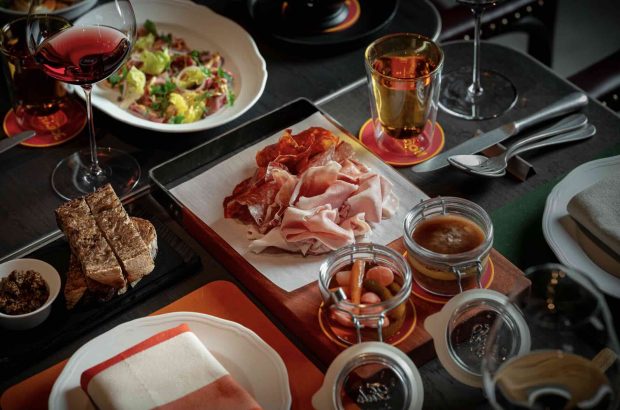We all love to eat. For those who also love to travel the world over to adventurous and/or glamorous locations like Italy, France, Brazil, Singapore, India, and elsewhere, you might also enjoy some exotic dishes and flavours cooked up in some very hot kitchens. By hot, we don’t mean trendy. We mean literally, hot.
Say the experts, restaurant kitchens, no matter where they’re located, are “notorious heat traps.” This is especially true in cooking areas where the temperatures directly in front of a grill can reach upwards of 110-degrees Fahrenheit or hotter. What’s the best way to combat excessive kitchen heat? By installing an efficient combination heating, ventilation, and air conditioning (HVAC) system.
You can also install supplemental equipment utilizing general ventilation. This includes small fans for spot cooling, and evaporative cooling machines that will reduce the stress and strain excessive heat can put not only on staff but also on a kitchen’s refrigeration systems.
What’s more, it’s vitally important to make sure your HVAC systems are in proper working order. If your kitchen is suddenly without cool air because of a breakdown, you need to bring in a reliable air conditioning repair service such as denver air conditioning repair immediately before the entire kitchen staff has a meltdown.
Says one professional AC repair service in Jacksonville, a Florida city that can often be sweltering, all restaurants should contract with a licensed 24/7 AC repair service. The service should include holidays, nights and weekends since these are always the times when AC units seem to break the most!
Here are some other tips on keeping your professional restaurant kitchen cool even in the hottest climates.
It’s Okay to Vent
Designed to capture and push out heat, smoke, fumes, as well as toxins, exhaust hoods make it easier for air conditioning equipment to operate at optimum levels. Modern ventilation systems are powerful and can use up to 28-percent of overall energy costs. They are also subject to health department inspection in most countries. That’s why it’s important to employ a certified professional for their installation and maintenance.
Do it Clean
A clean kitchen is a highly functional, indeed safe kitchen. HVAC systems also function properly when they are kept clean, not to mention remaining in compliance with the health department.
Your cooling equipment must be inspected on a regular basis for grease buildup, which can cause fires if left unchecked. Filters must be replaced, and ductwork must be vacuumed. Keep in mind that your employees must report any unusual changes in room temperature since this could be an initial sign of a much bigger equipment problem.
Ventilation in General
The air that’s pushed out of kitchen exhaust vents is usually replaced with air that comes from several sources, including a rooftop HVAC unit, plus air from open doors, windows, and even from the dining room.
However, it’s not always a good idea to keep doors and windows open during operating hours since insects can find themselves nesting in the chef salad you’re preparing or perhaps the soup of the day. It’s best to open the doors and windows early in the morning and just before closing when food preparation isn’t in progress.
Your Biggest Fans
You need to experiment with fan placement to find the “sweet spot” for optimal ventilation. Auxiliary fans should never compete with exhaust fans. You’ll want to aim fans away from pick-up areas where hot food can quickly become cooled.
You might try a portable fan on the kitchen floor while a big fan might be installed overhead. Window fans can also come in handy since they can be installed face-out to get rid of hot air. Again, keep your fans clean of grease and dust. Always equip them with fan-guards to prevent accident and injury.
Take Time to Take Your Temperature
There’s perhaps no busier place on earth than a kitchen drowning in food orders. But that doesn’t mean you can skip taking time out to monitor the many thermometers placed all around the kitchen in food prep, refrigeration, and pick-up areas.
One best practice is to gather up the staff to educate them on heat-related sickness, which can include but is not limited to sudden headache, fatigue, dizziness, nausea, and more. You should also teach them how to prevent heat sickness by making sure they are sufficiently hydrated throughout working hours. Make certain plenty of freshwater is on hand for them.
Employees and owners also need to take frequent breaks in cool, shaded areas that contain fresh air. Even a couple of minutes standing inside the cooler is said to “revive a wilting worker.”
Another best professional kitchen practice is to schedule your food and equipment deliveries for first thing in the morning when everything is still cool.








